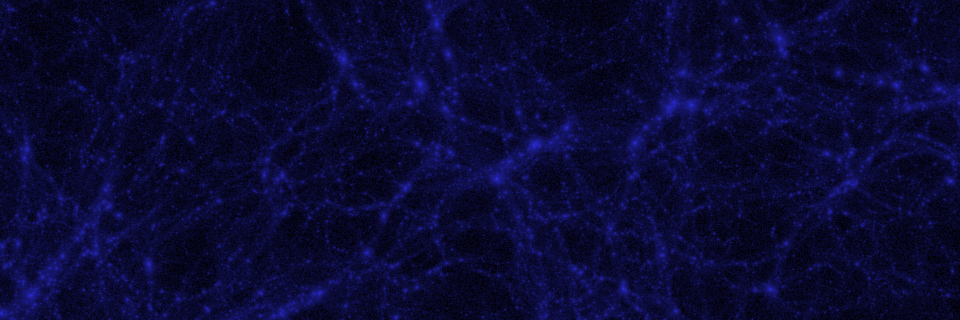About

Upcoming weak lensing surveys require a detailed theoretical understanding of the matter power spectrum in order to derive accurate and precise cosmological parameter values. While galaxy formation is known to play an important role, its precise effects are currently unknown. To address this, we (Marcel van Daalen, Ian McCarthy and Joop Schaye) collected matter power spectra from 92 OWLS, cosmo-OWLS and BAHAMAS simulations, as well as EAGLE, Illustris, IllustrisTNG and Horizon, including different LCDM cosmologies, neutrino masses, subgrid prescriptions and AGN feedback strengths.
Many of these power spectra were compared and discussed in van Daalen, McCarthy & Schaye (2020), a follow-up on van Daalen et al. (2011). Some of our main findings were that changing the strength of AGN feedback has a major effect on the matter power spectrum, and that changing the strength of supernova feedback in the presence of AGN feedback can significantly affect the power on large scales as well. Most importantly, we found that the effect of galaxy formation on large scales, k<1h/Mpc, is strongly correlated with the baryon fraction in group-scale haloes. Differences in this quantity can explain the differences seen between the predictions of different simulations for the large-scale power in the presence of baryons. In the paper, we present a fitting function that predicts the effect of galaxy formation on the matter power spectrum to within 1% for k<1h/Mpc as a function of only the mean baryon fraction in 1014M☉ haloes.
The power spectra in our power spectrum library can be found here.
The data

Links to the library of matter power spectra from 102 simulations are below. Most simulation power spectra are available down to k>10 h/Mpc and redshifts between 0 and 3, but all simulations will have power spectra at z=0 at the very least. Next to the power spectra for each hydrodynamical simulation simulation is a link to the power spectra for its dark matter only counterpart. For more information, see tables 1 and 2 in van Daalen, McCarthy & Schaye (2020). All power spectra are total matter power spectra, which includes massive neutrinos where applicable, and shot noise was subtracted. CDM-only power spectra can be found here.
Note: The power spectra with neutrinos have been updated on Dec 19 2019. The normalization of these power spectra has changed slightly, but the ratio of the hydrodynamical and dark matter only power spectra is unaffected at the sub-percent level.
Note #2: The power spectra for all matter of cosmo-OWLS REF_Planck and NOCOOL_UVB_Planck were replaced on Apr 15 2021, as the power at some redshifts was a duplicate of that at higher redshifts. Thanks to Alexander Mead for first pointing this out.
Note #3: EAGLE, Illustris, IllustrisTNG and Horizon power spectra have been added with permission on Oct 5 2021 (SIMBA on Jul 11 2022), as well as a reference for each simulation (note that all power spectra except those for Illustris(TNG) and Horizon were calculated by van Daalen, McCarthy & Schaye 2020).
Note #4: Power spectra for the FLAMINGO simulation suite are now available on the FLAMINGO website.
The data - CDM-only

Links to cold dark matter power spectra are below. Shot noise was subtracted. Note that for many simulations, only z=0 is available.
Note: EAGLE, Illustris, IllustrisTNG and Horizon power spectra have been added with permission on Oct 5 2021 (SIMBA on Jul 11 2022), as well as a reference for each simulation (note that all power spectra except those for Illustris(TNG) and Horizon were calculated by van Daalen, McCarthy & Schaye 2020).
The paper

Exploring the effects of galaxy formation on matter clustering through a library of simulation power spectra
Marcel P. van Daalen, Ian G. McCarthy and Joop Schaye
2020, published in MNRAS [ADS] [astro-ph]
Abstract: Upcoming weak lensing surveys require a detailed theoretical understanding of the matter power spectrum in order to derive accurate and precise cosmological parameter values. While galaxy formation is known to play an important role, its precise effects are currently unknown. We present a set of matter power spectra from 94 OWLS, cosmo-OWLS, BAHAMAS and EAGLE simulations, including different LCDM cosmologies, neutrino masses, subgrid prescriptions and AGN feedback strengths. We conduct a detailed investigation of the dependence of the relative difference between the total matter power spectra in hydrodynamical and collisionless simulations on the effectiveness of stellar and AGN feedback, cosmology and redshift. The strength of AGN feedback can greatly affect the power on a range of scales, while a lack of stellar feedback can greatly increase the effectiveness of AGN feedback on large scales. We also examine differences in the initial conditions of hydrodynamic and N-body simulations that can lead to a ∼ 1% discrepancy in the large-scale power, and furthermore show our results to be insensitive to cosmic variance. We present an empirical model capable of predicting the effect of galaxy formation on the matter power spectrum at z=0 to within 1% for k<1h/Mpc, given only the mean baryon fraction in galaxy groups. Differences in group baryon fractions can also explain the quantitative disagreement between predictions from the literature. All total and dark matter only power spectra in this library will be made publicly available here.
Contact
If you have any questions about the paper, model or data, please fill in the form below.
- daalen [at] strw.leidenuniv.nl


